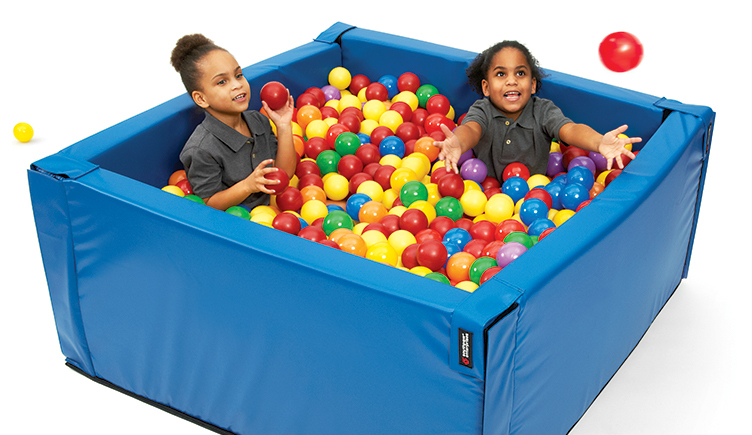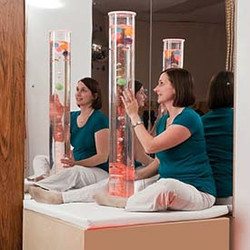Since its inception and as specifically described by Hulsegge and Verheul, “snoezelen” has always promoted the passive, user-directed approach with facilitators being ‘enablers.’ This enabling approach has its focus on the relationship between the user and the care-giver. The facilitator is able to develop a relationship with the user that is built on trust by monitoring the users’ mood and responses to the equipment they select. The facilitator assists the user to explore the equipment, assist in choosing stimuli and provide extended opportunities for interaction. This non-directed approach is the basic tenet of “snoezelen” philosophy and continues to this day as it is important to allow clients to make their own choices and have control over their world.
Over time the Multisensory environment came to be considered for other purposes than recreation and relaxation. When the treatment of people with intellectual impairments moved away from the medical model and toward the educational and vocational model, the MSE was used to create the foundation for development and learning. If a person presents with low visual acuity and hearing, low intellectual ability to explore and reason, a user-friendly environment – developed specifically to be constant and predictable with their needs in mind – has shown to facilitate development and learning. If a person does not feel secure and safe in their normal environment there is the opportunity for them to withdraw, physically and emotionally, into a position of self-absorption. Learning and development will only occur if the sensory stimulation is meaningful to the person.
Learning about the world occurs through our senses. An educator or facilitator must be aware, both internally (through proprioception, vestibular and Golgi tendon organs) and externally (through tactile, visual, auditory, olfactory and gustatory senses), of the scope of the client’s world in order to create meaningful sensory experiences. The success of every MSE will be determined by the degree of objective assessment that is done on the clients that will be using the room. Determine a baseline of likes and dislikes, noting tolerance levels to intensity and length of stimulus across a variety daily living settings. A standardized assessment tool such as the Pool Activity Level (PAL) (Pool, 1999) can also provide a list of preferred stimuli and activity level.
As noted by Pagliano (1999) stimuli should be “ …controlled, manipulated, intensified, reduced, presented in isolation or combination…” In order for learning to occur, the stimuli presented in the room must be meaningful to the user. If teaching cause and effect is the goal, providing a meaningful stimulus replicates the principles as described by Skinner for his Operant Conditioning Chamber. The more variables that are presented, the more a person can understand about their dynamic internal processes.
Information learned during the control phase is used during the manipulation phase to make the stimuli even more meaningful. By adding a timer to the stimuli causes the user to repeat the action of pressing a switch. This repetition increases the opportunity for learning the principle of cause and effect.
The therapist, by controlling intensity, frequency and duration, allows the room to dictate behavior change, rather than through direct manipulation. Ultimately, it is the Multisensory Environment that will lead to a breakthrough in how the user sees the environment and allows the therapist to observe which sensory system is used and which one is avoided to explore specific equipment. The more things stay the same, the less they are noticed by the user. Intensifying or reducing the stimuli helps to focus the user on the task at hand.
The natural environment presents a variety of stimuli that places demands on the user to process multiple channels of information, both cognitive and unconscious, that must be acted upon to function in the setting. Stress and anxiety occur when the user is unable to adapt to these demands. In order for the user to learn how to react appropriately to multiple channels of stimuli, s/he must first be taught to respond to individual stimuli in the Multisensory Environment.
Lastly, the Multisensory Environment must be safe, predictable and consistent. These are also the main tenants of the operant conditioning chamber used in applied behavior analysis. The individual chooses the primary reinforcement after s/he perceives the environment to be safe and predictable. This will only occur if the after frequent and consistent visits to the MSE. Stress and anxiety interfere with adapting to the natural environment. Thus, providing a space where the user is in control, where the space is safe, predictable and consistent, where the focus is development of social and cognitive skills through a variety of recreational and educational activities.



